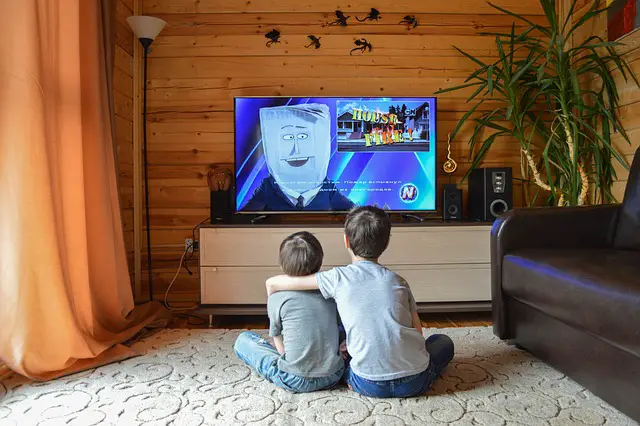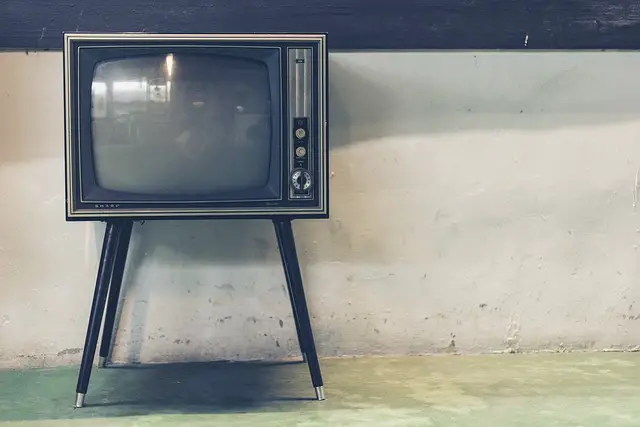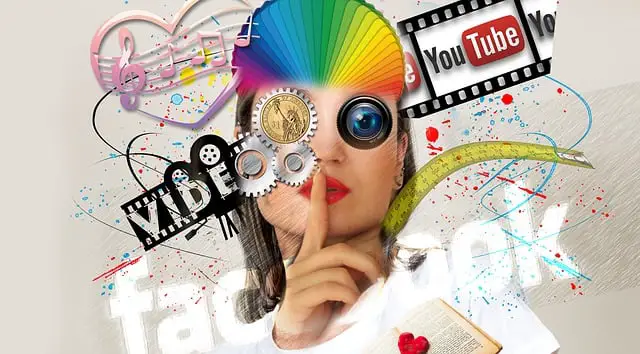The Golden Era of TV Nostalgia and Revivals in Entertainment
Mulder, Monica, Ferengi, and Festivus. TV in the 1990s had an important role in the creation of contemporary masterpieces.
I hope you’re enjoying 90s Week here at IGN, as we reflect on how pop culture from 30 years ago influenced today’s entertainment. Since we’re all completely buggin’ out, talking to the hand, taking chill pills, and just overall trippin’, we may as well tune in to TV and look at all the great ways 90s television gave way to the new Golden Age (which some clock with The Sopranos beginning in 1999).

Young single housemates became ground zero for sitcoms and solo stand-up comedians! Gen X, on general, saw more dramatic programming than previous youthful generations, courtesy to experienced producer Aaron Spelling, who began with a well-known zip code. Star Trek, which having made the remarkable jump from TV to movies, performed a second miracle by returning to TV (in the late 1980s) and prospering with an enlarged universe and fresh new characters in the 1990s.
Twin Peaks popularized the cinematic odd, paving the stage for “Water Cooler TV,” while The X-Files and NYPD Blue altered the procedural game in very different, unique ways. We owe so much to the game-changing television of the 1990s that it’s difficult to keep track of everything. Instead, let us tell you about some of the most significant events that paved the way for the television we see and enjoy today.
Peak Television
Yes, the phrase “Peak TV” may have originated with FX Content/FX Prods. chairman John Landgraf in reaction to the massive surge in written TV series caused by the emergence of streaming services over the previous decade, but at one time, in 1990, all eyes were on one TV show… And that was Twin Peaks. Sure, the program did not endure beyond its second season, but Season 1’s eight episodes, which premiered in the spring of 1990, were an immediate sensation. We’re talking about a large TV audience enthralled by David Lynch’s nightmare movie, as well as an off-kilter, unorthodox TV program that dabbled in both magic and science fiction.
Twin Peaks helped build a few templates. For starters, it was a pioneer in both “Water Cooler TV” and long-form mystery television. In other words, there was just one murder case, not a new one every week. Who murdered Laura Palmer? And it resulted in a program that people discussed “around the water cooler” at work the following day, before the internet existed. New clues and hypotheses. All of our current activities are conducted online.
There was just one murder case, not a new one every week. Who murdered Laura Palmer?
Second, Twin Peaks helped bridge the gap between film and television. The margin between the two mediums used to be rather wide. When a TV celebrity became a movie star, it was a big thing (think Bruce Willis). The majority of those who attempted it failed. The same goes for directors. So, with Lynch ostensibly taking a “backwards” step with TV, the series seemed loftier and more demanding of attention. Over the last two decades, the movie/TV distinction has all but vanished. Meryl Streep has 21 Oscar nominations, and the third season of Only Murders in the Building will premiere next week, which is no great thing. It’s enjoyable, but not a thing.
Twin Peaks also brought a unique visual language to television. Something more artistic, elegant, and intriguing. This was an auteur’s hand at work in a medium that never really required it. Without Twin Peaks establishing a bar, there would be no Breaking Bad or Better Call Saul, which could make us feel like we were watching an arthouse film every week. With such programs, television acquired a cinematic feel. Landscapes, machinery, and cinnamon buns were all visible, and there were periods when there was no talking at all. This wasn’t really Twin Peaks’ style, but it did help break the medium in the appropriate ways. It drew 35 million viewers to a program including horror, magic, cryptic dreams, and humans being transformed into doorknobs and s***. There was no going back.

It’s also worth noting that Twin Peaks was co-created by Mark Frost, who was a writer and executive story editor for the 1980s police series Hill Street Blues, which was praised for propelling the cop show genre ahead in monumental, historical ways.
The Truth is Out There It changed the procedure.
Twin Peaks may have been “stealth” sci-fi at best, but sci-fi remained popular in the 1990s because to the upstart network Fox’s program about two FBI agents assigned to explore the strange and unexplainable universe. The X-Files, created by Chris Carter, combined the typical rhythms of a “case of the week” program and mismatched partners with a critical background narrative, a show “mythology,” about the government’s cover-up of extraterrestrial life.
The majority of the episodes had David Duchovny’s Fox Mulder and Gillian Anderson’s Dana Scully snooping around tiny communities and uncovering local horrors, but there was also a broader mystery, an intriguing conspiracy, that touched on our own real-world anxiety about extraterrestrial life. The X-Files pushed the boundaries of the police show by combining monster of the week episodes, bottle episodes, crazy episodes (body-swapping, breaching the fourth wall, etc.) with an overarching serialized storyline.
Many procedurals would eventually become hybrids, similar to The X-Files, blending weekly cases with a long-form mystery involving the protagonist(s). The X-Files also paved the way for additional genre television, demonstrating that science fiction could be a lucrative industry. Fringe, Person of Interest, Supernatural, Evil, Warehouse 13, and Lucifer… Non-magical series such as The Blacklist and Blindspot also followed.
While open-minded Mulder and skeptical Scully were making headlines with tiny green men and flying saucers, another, more conventional procedural was making waves… Moving TV ahead into the unknown.
NYPD Blue was a police show. After the Western genre died out, television depended mainly on doctor/lawyer/cop series set in hospitals, courtrooms, or precincts. But NYPD Blue was going to push the boundaries of 10 p.m. programming with sex, profanity, and complicated, ethically ambiguous scenarios in which the cops were not always right. You did not always cheer for these characters. Most of them have serious flaws. Another Hill Street Blues alum, creator Steven Bochco, was taking a major risk with this series, which was exacerbated by breakthrough actor David Caruso’s departure after two seasons to become a movie star (it didn’t work – see how difficult it used to be!).
It began on ordinary network television, then premium cable took over, and the Anti-Hero Era fully began.
NYPD Blue, which broadcast on ABC, featured bare buttocks and side boobs (a first for network TV) while also allowing its characters to speak “s*” and “ahole” (again, unprecedented). This series sparked controversy since the officers were anti-heroes. Andy Sipowicz, played by Dennis Franz, was the series’ central character and a loud, bigoted alcoholic. Sure, the guy finally became sober, but that’s hardly a good lead for a police show. NYPD Blue premiered in 1993 and went for 12 frickin’ seasons. And it demonstrated that people were eager for more adult, complicated, and demanding programs. Without it, who knows what HBO’s original programming might have become. The pipeline kind of goes Hill Street Blues, NYPD Blue, Oz (1997), The Sopranos (1999), The Wire (2002)… And so forth. It began on ordinary network television, then premium cable took over, and the Anti-Hero Era fully began.
By the way, basic cable would get into the game a decade later with Breaking Bad, The Shield, Damages, Sons of Anarchy, and so on.
Beverly Hills. That’s where I want to be
The combination of MTV and home video game consoles gradually transformed children in the 1980s. The decade started with elder Generation X playing outside from sunrise to sunset, while younger Generation X spent quality time inside in the late 1980s. There were Def Leppard videos to view and Castlevania III to play. Since more youngsters than ever were crowded around the TV for longer periods of time… Why not give them their own show? It’s not only after-school shows. Not only programs that can be “enjoyed by the whole family.” programs for the youngsters.
Not all 1980s primetime dramas had police, attorneys, and the like. There were also nighttime soaps. You have Dynasty, Falcon Crest, Dallas, Knots Landing, and so on. It was grown-up affluent people doing poorly, and it was a huge deal for a time. But what if there was a primetime soap opera for high school students? Thus, Beverly Hills 90210 was born. Creator Darren Star (Sex and the City, Emily in Paris) recognized a chance to reach an underserved audience: this would be an adolescent drama dealing with serious issues such as date rape, homophobia, drug addiction, domestic violence, and eating disorders.
And from 90210, a complete TV ecology arose.
Not only did 90210 have its own spinoffs (Melrose Place, Models, Inc., and the spiritual spinoff The Heights), but there were other early efforts to portray youthful reality, both for laughter and tears. Unfortunately, My So Called Life (1994) and Freaks and Geeks (1999) were both ahead of their time in addressing suburban high school misery (although from different perspectives). Both had significant would-be stars but, unfortunately, only lasted one season.
The 1990s were filled with Y/A dramas. The Party of Five proudly held the flame until The WB hit success with Dawson’s Creek, Felicity, and yes… Buffy the Vampire Slayer is a game changer.
A failed film with a solid premise but poor tonal execution became a pitch-perfect TV series that combined Y/A dramedy with scary hijinks. Buffy was a breakthrough event for many fans, inspiring individuals to become TV writers, similar to how ABC’s Lost did a decade later.
We are in an era of nostalgia—blame it on technology.
From our rekindled love of bohemian fashion and vinyl to our obsession with historical novels and period instruments, we can’t get enough of the past. Is the defining cultural theme of our day a response to the exhausting speed that technology causes us to live at?
The twentieth century was one of constant change and mobility. It nurtured modernism, surrealism, and abstract expressionism, reimagined the house as a “machine for living,” imposed a Space Age aesthetic on fashion and design, and remade itself with each passing decade. However, somewhere in the 1990s, the century’s persistent cultural dynamism came to a halt, and its exploratory gaze shifted backward. In its last exhausted years, maybe tired of these metamorphoses, its soul became retro. This was more than just a fin de siecle period of cultural introversion. It marked the beginning of a new kind of sensibility. And we’re standing in it today. This is the era of nostalgia.
The phrase nostalgia was invented in 1688 by a Swiss doctor, Johannes Hofer, who observed a “mood originating from the desire for return to one’s native land” in some sad-sack exiled compatriots, mostly soldiers and laborers living far from the Alps. To express this severe melancholy longing, he combined the ancient Greek terms for home (nostos) and pain (algos). Nostalgia entered the language as a disease, or at the very least a flaw of character. Being regressive, old-fashioned, or out of step with the times was a cultural offense during the majority of the rapidly changing twentieth century. But nostalgia is not what it used to be. The term that formerly meant absence now signifies a strong presence in music, art, design, and fashion. We are all nostalgic now.
The Catherine wheel of global fashion would not spin without nostalgia’s energy to propel it, and there isn’t a fashion designer alive who doesn’t look to costume archives for inspiration. Fashion is less about the new and more about the familiar. “That ’70s Show” was how fashion experts defined Milan Fashion Week’s spring/summer collections displayed in September of last year. For Emilio Pucci, Norwegian designer Peter Dundas created a surreal whirl of floral-beaded skirts, brown suede hipsters, tie-dye, pastel patterns, and massive neckpieces, punctuated with racy ’70s orange. Pucci wasn’t alone. Gucci, Prada, Burberry, and Louis Vuitton all riffed on bohemian, disco, and flower power. A week later, in Paris, Karl Lagerfeld staged a phony feminist demonstration for Chanel in 1974, with one model holding the ultimate rebel-without-a-brain placard: “Free Freedom”.
Pop music has a far greater impact on the cultural environment. But it, too, is a parody of the past, an endless loop of samples and remixes. Not every vinyl LP collector is a hi-fi fanatic; most are just time travelers. “There is a great romance about putting a vinyl record on a turntable and dropping down the needle to hear the little crackles and squeaks before the music starts,” Dan Rosen, chief of the Australian Recording Industry Association, said recently in response to news that vinyl record sales more than doubled in 2014.
The victory of nostalgia, and maybe enhanced medical treatment, explains why septuagenarians Bob Dylan, Keith Richards, Neil Diamond, Mick Jagger, Paul McCartney, Art Garfunkel, Leonard Cohen, and Aretha Franklin refuse to retire peacefully from the spotlight. And it’s why, when Aerosmith’s 67-year-old vocalist Steve Tyler bellows mid-set, “Do you want the new shit or the old shit?” the crowd chants along, “We want the old shit!”
Nostalgia also explains why current California rock sounds like a mash-up of old psychedelic West Coast rock with stronger dance rhythms, while British music lovers are perplexed by a surge in ’90s Brit-pop nostalgia. Without the overwhelming retro drive of nostalgia, pop music discussion would not revolve around the recurrent issue of what’s “back” and why. A YouTube playlist of ’90s pop music titled “very Nostalgic and perfect for parties!” exemplifies nostalgia’s tremendous societal transformation. This fun-filled tribute to Britney Spears and the Spice Girls is everything but wan, sad, or melancholy.

Emotional Compass
Nostalgia may have developed as a mental disorder based on the emotions of loss and desire, but it has evolved to signify a liking or appreciation for another period or culture, rather than a painful yearning for it. Nostalgia is the new normal.
Aarti Iyer, a psychologist at the University of Queensland who has studied the phenomenon’s cultural evolution over three centuries, contends that what was once considered an infirmity – a clinically recognized psychological illness similar to depression – is now recognized as a component of good mental health. “For the past 10 years or so, social psychologists have conceptualised nostalgia in a much more positive light, focusing on the everyday experience of this emotion,” she explains. “Nostalgia reminds individuals of joyful, exciting, or inspired periods in their life; of specific events, people, places, or moments when they were happy, eager, or inspired. Nostalgia connects who we are now to who we were in the past, giving us a feeling of continuity across time.
“This continuity of identity benefits us because it provides purpose and structure to our lives. It promotes a greater sense of self within a social and cultural framework, as well as the ability to handle anxiety and ambiguity in the world. It may also give us the confidence we need to face life’s obstacles.”
Nostalgia, according to psychologists like Iyer, is an emotional compass in a whirligig world. Over the last decade, emails, apps, and search engines have brought a tornado of change crashing down on the workplace, disrupting the collective headspace and slicing the day into thousands of electronic missives.
The home computer and its offspring, the tablet, smartphone, and smart TV, are the engines of the new nostalgia. The internet fuels the nostalgic mood by archiving every song, record, book, and image and making them instantly accessible. Technology plays an ambiguous dual role as both destroyer and creator, problem and solution.
Napster, a music-streaming service, has sliced and diced its musical library of 30 million songs into packages of pop cultural time, from 1961 to 2011. Each package, headed by the nostalgic refrain “I Remember,” recalls the music scene of a chosen year. For example, 1991 was “ruled by grunge and rave,” while 1967 was about one thing: LSD.
According to Napster: “At the start of that year Dr Timothy Leary, sacked Harvard academic and evangelist for consciousness-expanding drugs, told 30,000 people at San Francisco’s Human Be-In to ‘tune in, turn on, drop out’.” The freaks were increasing in number.
Thomas Green, a British pop music writer, has characterized feel-good nostalgia as a desire for “a golden time of life and a bond with other fans.” Returning to that is warm, comforting, and enjoyable – it’s a celebration of a part of their lives.” But this doesn’t explain the success of Lady Gaga and Tony Bennett’s Cheek to Cheek album, following their revival of 1937 show tune The Lady is a Tramp, both of which invoke an age beyond living memory. It also doesn’t explain why, in classical music, audiences are flocking to early choral performances and baroque works played on old instruments crafted in strict imitation of those
The fetishization of old instruments and period performances coincides with another popular form of cultural time travel: historical fiction. Since the birth of the modern novel in the early 17th century with one Spanish narrative, Miguel de Cervantes’ Don Quixote, and one French, Madame de La Fayette’s Princess of Cleves, the past has provided a solid foundation for writers to embroider their fictional worlds.
Historical fiction has grown in popularity, with bestsellers ranging from Hilary Mantel’s Wolf Hall to Philippa Gregory’s romances (The White Princess) and the antiquarian pulp fictions of Simon Scarrow (The Gladiator) and Christian Cameron (Poseidon’s Spear) at Sydney bookshop Abbey’s. Tolstoy’s War and Peace and Sir Walter Scott’s Ivanhoe were both historical fiction writers.
“It seems especially popular with readers who like the fantasy genre but want it without dragons, elves and goblins,” says Christian Hummelshoj, deputy manager. “There’s that yearning for a simpler time when if you didn’t like someone you could always chop off his head.”
Trent Jansen, an Australian designer specializing in furniture and domestic objects, sees nostalgia as an essential source of continuity, emotional connection, and narrative richness. “My work is all about nostalgia, about trying to inject an object with a sense of character or an emotion that forges a link with the user,” he says.
Jansen attributes the nostalgic element of his work to the stability of the design tradition, which is anchored to acknowledged classics by the likes of Le Corbusier and Arne Jacobsen. He recently produced a “diaspora light” with a neon ring beneath a false globe designed to evoke family memories of migration from a motherland for Nektar Efkarpidis, co-director of the family company behind Canberra’s award-winning Hotel Hotel.
Assisting and improving
The nostalgic turn is so deeply ingrained in contemporary culture that its presence is felt in the art form most closely associated with modernity: cinema. More black-and-white films have been made in the last two decades, including The Artist (2011), A Field in England (2013), Much Ado About Nothing (2012), Nebraska (2013), and Frances Ha (2012), than the previous two.
After filming and editing Frances Ha, a monochrome homage to the early 1960s French new wave shot mostly in Manhattan, director Noah Baumbach concluded that “there was something about black-and-white that makes the movie almost immediately nostalgic.” The return to black-and-white is not just a superficial trend; Joss Whedon, director of Much Ado About Nothing, declared to American public radio’s Studio 360 that “we’re part of a movement.”
In 1995, the development of the DVD, which allowed films to be transferred from analog to digital formats, as well as their restoration and preservation, was a little-noticed moment in cultural history. Classics like Citizen Kane could now be viewed at home on DVD and enjoyed in something close to their original condition, rather than a decaying vault of nitrate film and poor quality video.
With apps like CameraBag and Hipstamatic, high-megapixel photos taken on the latest smartphones are given the soft hues of vintage photos from the ’70s that were long ago retired to unseen photo albums. When an image captured in this moment is given the instant patina of age and memory, technology has managed to collapse the divide between present and past.
At first glance, we appear to be living in a cultural paradox: digital technology allows for the preservation, cleaning, polishing, and re-creation of old cinema, while also giving images taken today a faded vintage look, either through digital black-and-white or special filters. However, nostalgia is the common thread that connects the renovation of the old and the archaizing of the new.
The costumes and interior designers for The Matrix (1999), Minority Report (2002), and I, Robot (2004) aimed to make the future look like the past, which explains why the decade of 2001 saw a slew of fantasy films based on J. R. R. Tolkien’s The Lord of the Rings novels and J. K. Rowling’s Harry Potter series.
In the 2004 television series Battlestar Galactica, Tricia Helfer, as Cylon Number 6, was dressed in a blood-red ’50s glam gown that became the series’ defining image. While ’60s sci-fi embraced a futuristic aesthetic – think of Jane Fonda’s Barbarella’s soft Space Age erotica – the genre today likes to riff on the past.
Art for the New Epoch
Unlike popular music and fashion, which are fixated on a recent past endowed with enormous cultural glamour, contemporary art has been less receptive to the siren song of nostalgia than other, more popular cultural forms over the last two decades. One reason could be that the art of the 1970s, as Robert Hughes observed in The Shock of the New, was an art of no great importance. Greatness in the art world belongs to a deeper and longer tradition.
But the picture is changing. Culture critic Andrew Frost detects a nostalgic impulse in the art of the new millennium as it looks not so much for aesthetic models as for social and political touchstones. “Over the past decade there’s been a wide-ranging reassessment of art of the 1970s,” he says. “This was partly to do with artists and theorists trying to figure out how the politically and ecologically motivated art of 40-odd years ago might offer a way forward in making art However, from today’s viewpoint, that decade seems to be cooler and more fashionable, with far purer objectives than the convoluted conversation we are now experiencing. Of course, it’s all a little confusing for folks who worked in the ’70s, but that’s the nature of nostalgia for a period before your birth.”
He says that the retrospective turn may also be a helpful resource: “Where most nostalgia is for a highly selective reading of the past, a real immersion in its ideas and concepts can reinvigorate contemporary thinking.” For example, many artists are investigating the origins of our understandings of nature, conceptions of the sublime and nature from the 18th century via philosophers like as Burke and Kant, and how this relates to art concerning the Anthropocene. That’s the positive.”
The first work of Western literature, The Iliad, was nostalgic about a vanished world of Bronze Age warriors, and the artists of the Renaissance all drew inspiration from sacred and profane myth. To understand the full significance of nostalgia’s transformation from a negative to a positive emotion, the long view is a useful key.
Until the end of the twentieth century, the romantic notion of the artist-genius was firmly established. During the age of Romanticism, the artist rises to the status of a lone cultural hero, as imagined in Caspar David Friedrich’s Wanderer above the Sea of Fog. Tradition, once a source of sustenance, becomes an impediment for the Romantic artist.
But in a fast-paced world of rapid change, we yearn again for continuity, tradition, and cultural stability; for access to the source of things; and, yes, for home. We seek it in narrative, fashion, music, cinema, and art. This is certainly the spirit of good nostalgia, as understood by designer Trent Jansen and psychologist Aarti Iyer.
The era of nostalgia may just be a means of restoring balance, a return to normal transmission.






